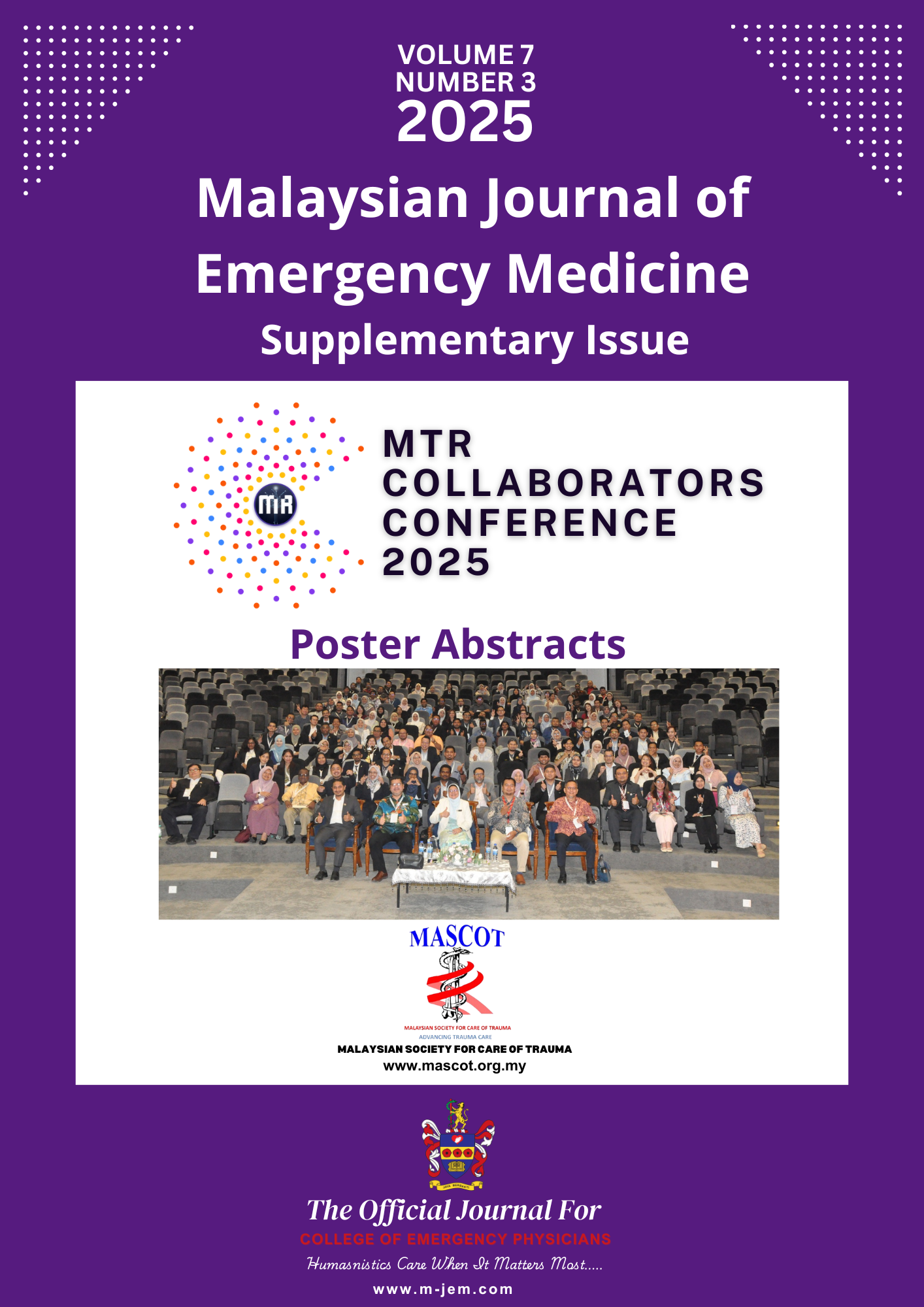A04 Epidemiology and Outcomes of Severe Trauma: Pilot Data from the Malaysian Trauma Registry at Hospital Tengku Permaisuri Norashikin, Kajang
Main Article Content
Abstract
INTRODUCTION
Severe trauma is a major cause of morbidity and mortality in Malaysia, with road traffic accidents contributing substantially to the national burden. The Malaysian Trauma Registry (MTR) serves as a key platform for monitoring injury patterns, severity, and outcomes, and supports the development of improved trauma care systems.
OBJECTIVE
To describe the demographic profile, injury mechanisms, severity, and outcomes of severe trauma cases recorded in the MTR at Hospital Tengku Permaisuri Norashikin (HTPN) Kajang as part of a pilot study.
METHODS
A retrospective descriptive analysis of MTR data from HTPN Kajang was conducted. Included were trauma patients presenting to the Red Zone of the Emergency and Trauma department. Variables analysed were demographics, injury mechanism, Injury Severity Score (ISS), intensive care use, and discharge outcomes. Patients admitted more than 24 hours post-injury or dead before arrival were excluded.
RESULTS
A total of 65 severe trauma cases were identified. The median age was 29.2 years (IQR 20.6–38.0), with a male predominance (82.8%). Road traffic accidents were the leading cause (48%), followed by falls (5%) and blunt trauma (3%). Over one-third (37.5%) had ISS >15. Intensive care admission was required in 14%, and 32.8% needed mechanical ventilation. Outcomes showed that 43% were discharged home, while in-hospital mortality was 11%.
CONCLUSION AND IMPLICATIONS
This pilot study confirms the feasibility of implementing the MTR at the institutional level. Findings highlight the need for targeted prevention, streamlined trauma care pathways, and wider registry participation to strengthen Malaysia’s trauma system.
Metrics
Article Details

This work is licensed under a Creative Commons Attribution-NonCommercial 4.0 International License.

